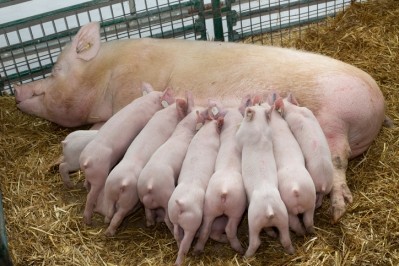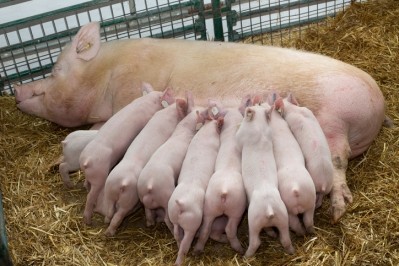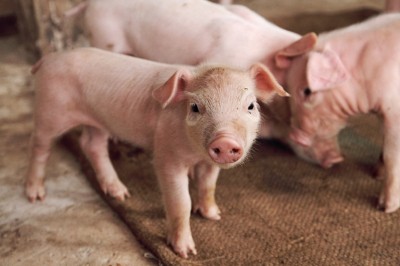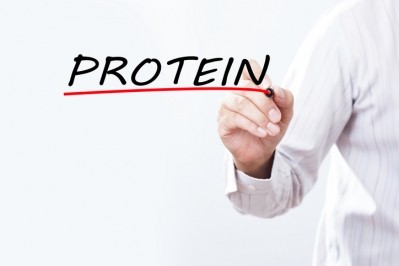Study shows higher protein levels in sow diets benefits litter
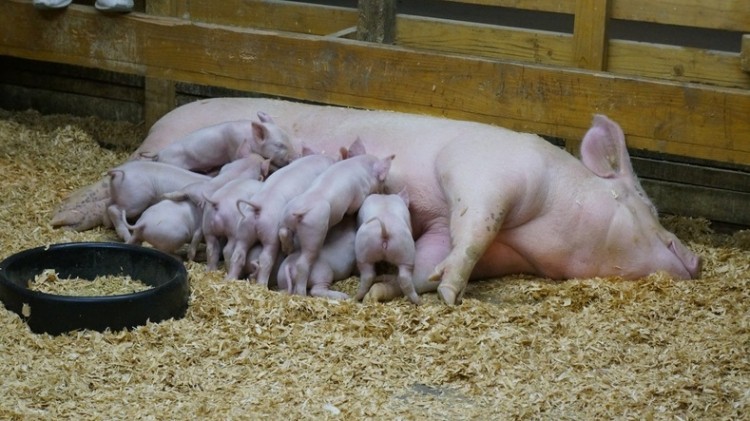
In addition, the Danish researchers, based at the University of Copenhagen and the SEGES Danish Pig Research Centre as well as an Evonik subsidiary, found body weight (BW) loss of the sow was minimized and reproduction in the subsequent cycle was not negatively affected by this dietary crude protein level.
The study, which was published in Animal Feed Science and Technology, received financial support from the Pig Levy Foundation and from the EU and Rural Development Program under the Danish Ministry of Food, Agriculture and Fisheries. The feed analysis was partly sponsored by Evonik Denmark.
Aim of study
The researchers said they undertook the study to see the effect of increasing balanced dietary protein in hyper-prolific lactating sows.
“The modern sow has undergone major changes during the last decades and has become larger and leaner and gives birth to more piglets, but only few studies have recently investigated the effect of increasing dietary protein with a balanced AA composition of lactating sows (Laspiur et al., 2009; Manjarin et al., 2012; Huang et al., 2013).”
The high-producing sow nurses and weans more than 12 piglets (Strathe et al., 2016, 2017), placing an increased demand on the nutrient availability for milk production, and increasing milk yield and nutrient contents is essential to meet the energy and nutrient demand of the large litters.
The Danish team noted several studies that found a higher litter ADG when increasing dietary protein (King et al., 1993; Yang et al., 2000a; Manjarin et al., 2012), but only few that had found an increased milk yield (King et al., 1993; Sauber et al., 1998).
However, they said the increased ADG could be a result of increased nutrient concentrations of the milk and several studies have shown increased milk protein as response to dietary protein (Guan et al., 2004; Laspiur et al., 2009).
“During lactation many sows turn catabolic to meet the milk demand of the litter (Dourmad et al., 1998; Strathe et al., 2015, 2017). High mobilization of protein can have a negative effect on milk production and reproduction in the following cycle (Zak et al., 1997; Clowes et al., 2003b). In addition, a high protein loss during lactation can be difficult for the sow to regain in the following gestation. (Everts and Dekker, 1995; Dourmad et al., 1996).”
Consequently, the Danish researchers said their objective was to test the effect of increasing dietary SID CP concentrations with similar AA composition on sow and litter performance.
They hypothesized that increasing the level of balanced dietary CP would have a positive effect on milk production, litter growth, and prevent excessive body mobilization.
Method
They said they allocated 544 sows to one of six diets from day 2 post-partum until weaning.
The diets ranged in standardized ileal digestible (SID) crude protein (CP) level of 104.3, 113.3, 120.9, 128.5, 139.2 or 150.0 g/kg.
The team said that at day 2 post-partum, litters were standardized to 14 piglets and body weight (BW), back fat (BF) thickness of sows and litter weight were recorded. Body weight, BF thickness and litter weight were also recorded at weaning.
They also obtained milk samples on a subsample of 70 sows at day 3, 10 and 17 post-partum and analyzed for fat, CP and lactose.
Results
The authors saw that multiparous sows had a higher average daily gain of the litter than first parity sows but litter size at weaning was unaffected by dietary treatment.
Milk CP increased to 5.0 g/100 mL until a breakpoint at 136 g SID CP/kg, milk lactose decreased until a breakpoint at 120 g SID CP/kg to 5.3 g/100 mL and milk fat increased linearly, they found.
They observed that the daily output of milk protein increased at day 17 until a breakpoint at 130 g SID CP/kg.
The team said the content of milk fat increased linearly with increasing dietary SID CP.
They noted a tendency towards an increased number of total born piglets in next litter with increased dietary SID CP but they said the weaning-to-estrus interval was unaffected by treatment.
The authors said future research should investigate if the benefits they observed in the sow and the litter were driven by the increase in balanced crude protein or lysine.
Source: Increased dietary protein levels during lactation improved sow and litter performance
DOI: https://doi.org/10.1016/j.anifeedsci.2017.08.015
Title: Increased dietary protein levels during lactation improved sow and litter performance
Authors: A.V. Strathe, T. S. Bruun, N. Geertsen, J. Erik Zerrahn, C. F. Hansen
